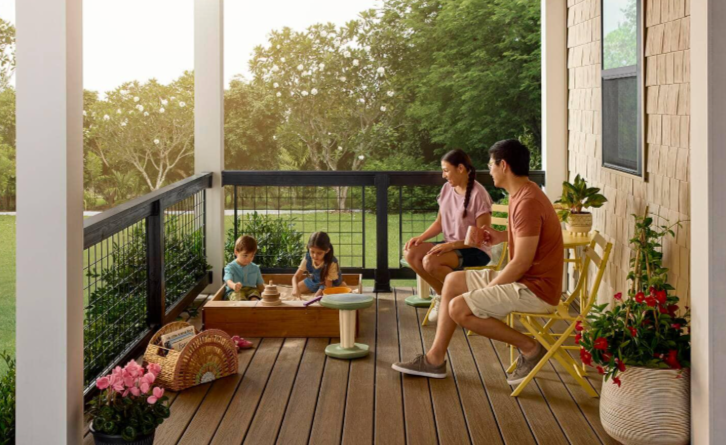
A deck ought to blend in seamlessly with the rest of the house. Every architectural style has an own personality and language. That character of the deck is brought out by the appropriate materials and details. The end effect is balance and harmony, which improves comfort and beauty.
Understanding the Connection between Home and Deck
A modern house often looks best with sleek surfaces and straight lines. Smooth composite boards with clean railings match the simple shapes of modern walls. A traditional home requires softer features. Natural wood with warm tones helps the deck look inviting and timeless. The connection between house and deck is built through these choices. It is not only about looks. It is about creating a space that feels like it belongs.
Choosing Materials That Echo Architectural Style
Material is the heart of design. A farmhouse with rustic charm welcomes wood that feels natural and sturdy. Wide planks with subtle grain echo the warmth of country living. A craftsman home benefits from strong details. Cedar or redwood boards with visible patterns fit that thoughtful character. A modern home demands innovation. Composite or concrete surfaces give a look that is bold and crisp. The right choice of material creates unity. The deck then flows as an extension of the home itself.
Selecting Railing Styles That Define Character
Railing is more than safety. It frames the view and speaks of design. A modern home looks strong with metal railings and glass panels. The clean sight lines create openness. A traditional home finds balance in classic wood balusters. These add rhythm and comfort. A craftsman style house shines with thick square posts and sturdy handrails. These emphasize structure and honesty. A farmhouse deck works best with simple cross rails. This reflects the openness of rural design. Each railing choice defines the voice of the space.
Designing Layouts That Respect Proportions
The shape and layout of the deck should echo the house. A long low ranch style home works well with wide open decking. This respects the stretched horizontal line of the house. A tall craftsman home often looks balanced with layered sections. A farmhouse may need a wraparound design that invites gathering. A modern home fits with strong geometric platforms. The design must serve both function and form. When the layout respects the home shape the whole property feels complete. Decks near by often show how proportion influences appeal. Observing those can inspire decisions for the right fit.
Adding Finishing Touches for Harmony
Details bring everything together. Color is a powerful tool. A deck stained to match trim or siding ties the look together. Lighting adds life after sunset. Soft warm lights fit a traditional or farmhouse feel. Sleek cool lights complement modern or craftsman design. Furniture also matters. Rustic benches feel right with farmhouses. Clean lined chairs suit modern spaces. Planters with natural greenery soften edges for every style. When details follow the language of the home the deck feels whole.
Conclusion
Designing a deck is about respect for style and character. The right material echoes the story of the house. The right railing strengthens its voice. The right layout keeps proportions true. The right details add harmony. Each decision builds toward unity. A deck then becomes more than an outdoor space. It becomes a natural part of the home.






